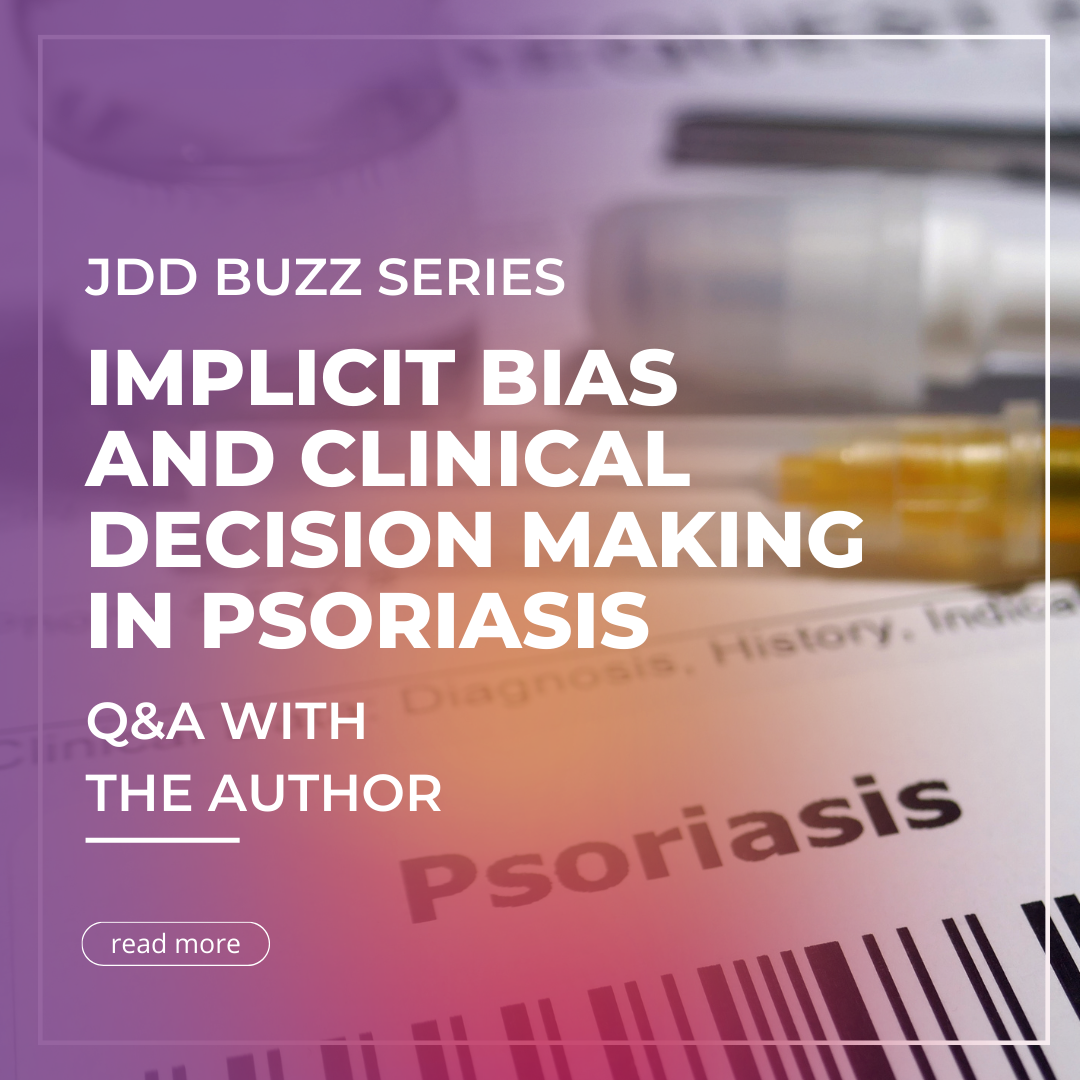Do implicit bias and race-compliance stereotyping impact clinical decision making in psoriasis? A feasibility study published in the February issue of the Journal of Drugs in Dermatology sought to answer this question.
To learn more about the key findings and takeaways, I interviewed one of the authors, Rithu Srikantha, MD, associate professor of dermatology at the Feinberg School of Medicine/Northwestern Medicine.
What led you to want to investigate implicit bias and its effects on decision making in managing psoriasis?
Implicit bias plays a role in clinical decision making in all fields of medicine and dermatology is no exception. We wanted to highlight the potential for racial implicit bias to impact decision making with a common disease like psoriasis, a disease with a well-established standard of care.
How did you conduct the study and what were your key findings?
The study was conducted with an online survey, which included a randomized clinical vignette describing either a black or white patient with severe plaque psoriasis. The survey was distributed through the Association of Professors of Dermatology (APD) listserv to U.S. dermatology residents. Participants were asked to select the best patient management option and to complete two Implicit Association Tests (IAT). Additionally, participants were asked to describe their attitudes toward implicit bias using a Likert scale.
We did not find any significant difference in dermatology residents’ management of severe psoriasis between the black and white patient. While we did not find statistically significant results, we did find that residents were more likely to recommend biologic therapy to the black patient compared to the white patient.
Did the results affirm your hypothesis or surprise you?
The results were ultimately surprising and lead to further questions. We anticipated participants would be more likely to select biologic therapy for the white patient based on prior Medicare data. With these surprising results we wondered if these results could be related to increased awareness of bias and hypercorrection or social desirability bias.
In addition to the vignette, you also asked respondents about implicit bias. What results were most surprising to you?
A majority of residents had formal prior implicit bias education in their residency training and felt this should be included. There has been an increased cultural awareness toward implicit bias and mandatory training in all levels of medical education. Dermatology residents seem to be open to this shift.
We did get more varied responses when we asked residents if implicit bias may impact their own decision making, and this was somewhat surprising. This suggests that while residents are interested in learning about and discussing racial implicit bias, they may be more resistant to accepting that it may actually influence decision making.
What are some takeaways from this study? What should dermatologists – and the medical community at large – consider in light of this study?
We had a limited number of responses in this study so it is hard to make far reaching conclusions regarding resident attitudes. However, we do hope this study spurs discussion about the role implicit bias, specifically racial implicit bias, may play in our day-to-day clinical decision making as dermatologists.
Did you enjoy this JDD Buzz article? You can find more here.

